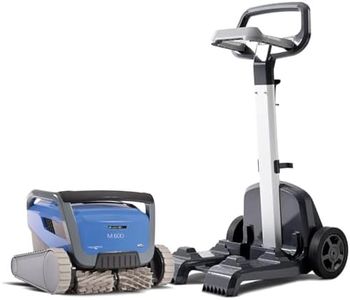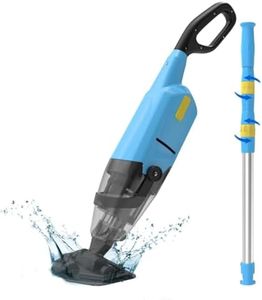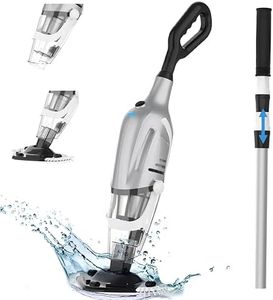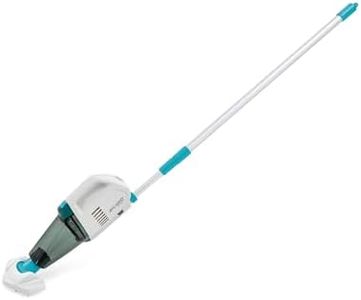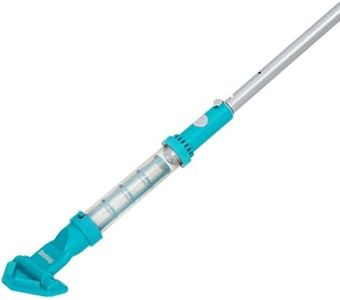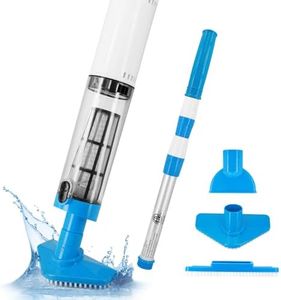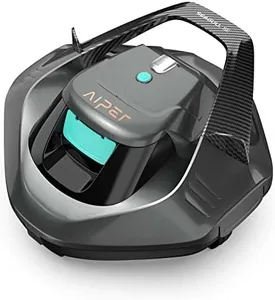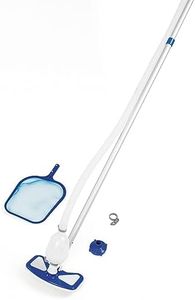We Use CookiesWe use cookies to enhance the security, performance,
functionality and for analytical and promotional activities. By continuing to browse this site you
are agreeing to our privacy policy
10 Best Above Ground Pool Vacuums
From leading brands and best sellers available on the web.Buying Guide for the Best Above Ground Pool Vacuums
Choosing the right above-ground pool vacuum can make pool maintenance much easier and more efficient. The ideal vacuum will help keep your pool clean with minimal effort and suit the specific size and conditions of your pool. To make the best choice, it's important to understand key features and how they relate to your cleaning needs. Ask yourself how often you want to clean, how much time you’re willing to spend, and the typical debris you need to remove. By focusing on the main specifications, you can narrow down your options and pick a vacuum that keeps your pool sparkling with less hassle.Type (Manual, Automatic, Robotic)The type of pool vacuum refers to how the device operates—manual, automatic (suction or pressure), or robotic. Manual vacuums require you to move the vacuum head along the pool floor using a pole, giving you direct control but requiring more physical effort. Automatic vacuums move around the pool on their own and can be either suction-based (attaching to your pool’s filtration system) or pressure-based (using water pressure to move and collect debris), which offers convenience but usually requires some installation. Robotic vacuums are fully self-contained units with their own motors and filters, needing only to be plugged in and placed in the pool; they offer the most convenience but can be heavier or bulkier. If you want hands-on control and have a smaller pool, a manual vacuum may suffice. For regular, effortless cleaning, an automatic or robotic vacuum is better suited, especially for larger pools or pools that collect a lot of debris.
Filtration System CompatibilityFiltration compatibility means whether the vacuum is designed to work with your pool’s existing filter system or has its own. Suction and pressure vacuums usually connect to your pool’s skimmer or return line and rely on your pool’s pump and filter, which is important if your system is powerful enough to handle the added workload. Robotic vacuums have their own filter system, requiring less from your pool’s infrastructure. Make sure you match the vacuum to the type and strength of pool filtration you have. If you have a smaller or weaker pump, a robotic vacuum is often better, as it avoids putting extra strain on your filter.
Cleaning Coverage (Floor, Walls, Steps)Cleaning coverage tells you which parts of the pool the vacuum can clean—just the floor, or also the pool walls and steps. Some vacuums are only designed for flat surfaces, while others can climb walls or clean around steps. If your pool collects debris on the sides or has steps where dirt settles, look for a vacuum with climbing ability or specialized attachments for steps. If your cleaning needs are mostly at the bottom, a simpler model with floor-only coverage could be enough.
Debris CapacityDebris capacity is how much dirt, leaves, and other particles the vacuum can hold before needing to be emptied. Larger capacity means it can run longer between cleanings, which is particularly important if your pool is under trees or collects a lot of debris. If your pool stays relatively clean, a smaller capacity is fine. For those who want to clean less often or deal with heavy leaf fall, a larger debris bag or chamber is especially useful.
Hose Length/Power Cord LengthFor above-ground pool vacuums, the hose or power cord length determines how far the vacuum can reach. Your pool vacuum needs a hose or cord long enough to reach every part of your pool from where the device is positioned. Shorter hoses are fine for small pools, but larger or oddly shaped pools demand longer hoses or cords. Always check the maximum reach and make sure it comfortably covers your pool, so you aren't dealing with an awkward or incomplete clean.
Ease of Use and MaintenanceEase of use covers how simple it is to assemble, operate, and maintain your vacuum. Some vacuums are straightforward with few parts and simple setup, while others require assembly or periodic maintenance like cleaning filters or replacing parts. If you prefer low-maintenance solutions or are new to pool care, look for vacuums with straightforward instructions, minimal setup, and easily accessible parts for cleaning. Those comfortable with more hands-on work may manage with higher-maintenance models if they offer other benefits.
